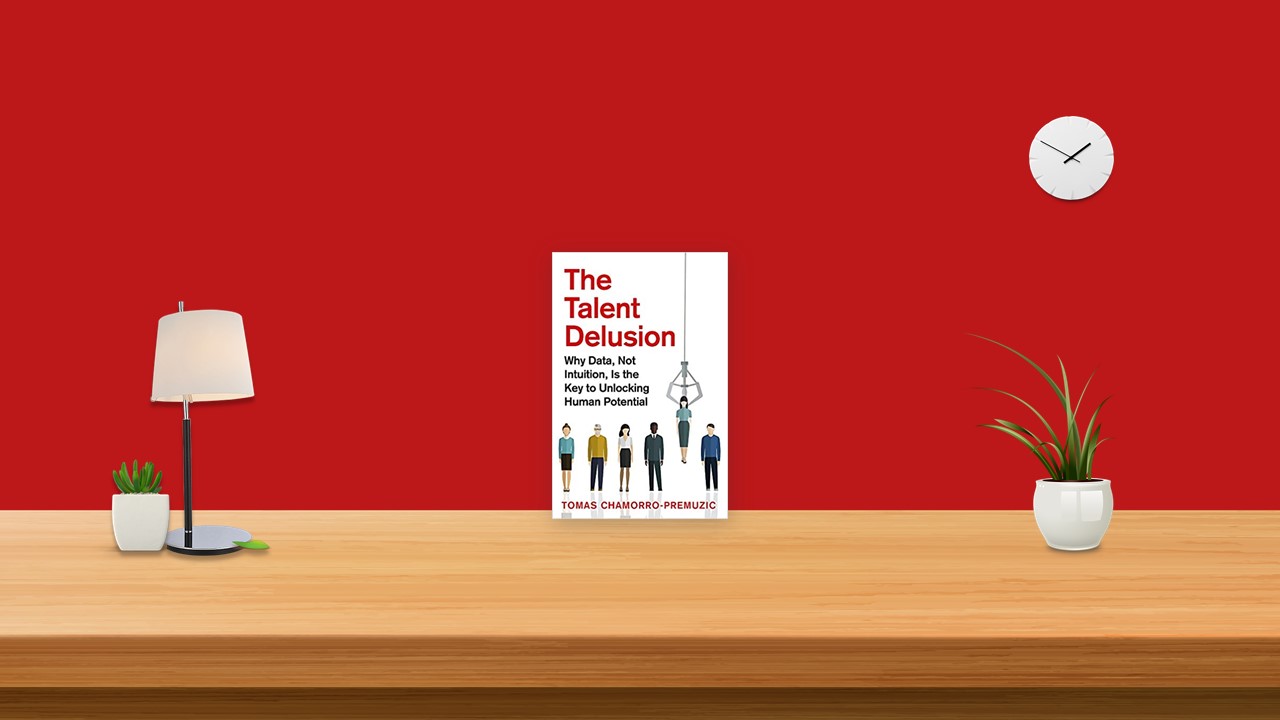The basic premise of this book is quite simple, namely that talent is an attribution, albeit an indispensable one. In other words, any notion of talent is ultimately a social construction of sorts, artificially created in order to make a future prediction about an individual’s performance on a task, job or role. Yet at the same time, in order to be accurate, that prediction should not be based on an arbitrary notion of talent but on key individual differentiators – relevant attributes that can help us distinguish between better and worse future performers, as well as quantify the degree of effort that has accompanied each performance instance.
To that end the four basic principles, or rules can be used to classify talent across any domain of work, career and occupation.
#1 THE RULE OF THE ‘VITAL FEW’
There is a universal rule in economics that predicts that in any organisation, 20 per cent of the workforce will account for 80 per cent of the output, and the other 80 per cent of the workforce will account for the remaining 20 per cent of output. By the same token, 20 per cent of the workforce tends to account for 80 per cent of the problems, and vice-versa. This law is the so-called Pareto effect, also known as the rule of the vital few, which states that a relatively small number of group members is usually responsible for a large number of consequences.
In the real world of work, this distribution is often more 90/10 than 80/20, though that is not always observable through clear metrics since organisations often lack objective performance data on their employees.
So, who are the talented employees? The answer is straightforward: the 20 per cent that account for 80 per cent of productivity, or the minority of individuals that drive the biggest portion of a company’s success. In this way, the rule of the vital few provides an elegant measure to connect individual behaviours with organisational outcomes; one that can also be used to quantify the potential or actual value of each employee.
Many top firms around the world have in place talent management processes that are congruent with the rule of the vital few. For example, General Electric divides its workforce into three sub-groups that signal how promising they are. Hindustan Unilever and Novartis identify a small percentage of ‘high-flyers’ early on and invest a great deal of time and money in developing their leadership potential
Note that their focus is not to make everyone better, but to further develop those who are already great.
#2 THE RULE OF ‘MAXIMUM PERFORMANCE’
Another way to define talent is by focusing on an individual’s best or top output. That is, what someone can do when they are highly motivated and trying hard under optimal conditions. This rule equates talent to an individual’s maximum performance, defined as ‘the level of performance in a given domain that one can produce on demand for a short period if one chooses to exert maximum effort’.
Importantly, whatever your top speed may be, it would not imply that you usually run at that speed. Indeed, your typical performance – what you do most of the time – may be completely unrelated to your maximum performance. By the same token, it would be foolish to infer someone’s running speed by observing how fast they usually run, or walk. Now, this does not mean that we can never infer how talented someone is from his typical performance. When professional musicians, athletes or actors train, their performances will still exceed those of 99 per cent of the population, even though they are saving their best for when it actually matters.
Given that managers often make critical decisions about employees based on their maximum performance, particularly in the context of personnel selection, it would be helpful if people’s maximum performance had some relationship with their typical performance. Consider the case of selection interviews, aptitude tests and job simulations, all of which are widely employed in recruitment and staffing. The value of these methods depends primarily on their ability to predict candidates’ future performance. However, since typical and maximum performance are only weakly correlated – their overlap is less than 20 per cent.
Their main utility is in forecasting what people could do, rather than what they will do most of the time. Studies have shown that aptitude tests used in the selection process, such as IQ or intelligence tests, are most useful when the goal is to predict job performance under maximum performance conditions, but not so much under typical performance conditions.
Perhaps the biggest advantage of the maximum vs. typical performance distinction is that it enables us to account for the familiar cases of underachievement. When the best a person can produce is impressive, to the point of putting them in the top 5 or 10 per cent in a group, there is no questioning the person’s talent. However, if such levels of performance are rarely replicated, then we can safely assume that the person is underperforming. Many great athletes fall into this category. They are talented enough to become professionals, and even break into the top 100 of their sport’s world rankings. Furthermore, they are often talented enough to beat athletes in the top 10, as well as occasionally record wins against the number 1 player. Yet their inability to repeat this often, and their tendency to show much poorer levels of performance in a typical tournament, turn them into a case of wasted talent. By the same token, in any field of achievement there are people who fail to live up to their expectations because their maximum performance isn’t displayed frequently enough.
#3 THE RULE OF ‘EFFORTLESS PERFORMANCE’
Although the 80/20 – ‘vital few’ – and ‘maximum performance’ rules provide us with two elegant criteria to judge talent, they are focused on past behaviours, or what individuals have already done. The 80/20 rule classifies people as talented if their output puts them in the top 20 per cent, and the maximum performance rule posits that people are as talented as their personal best. However, a comprehensive view of talent should also be able to account for cases in which individuals have not yet shown the best they can do. This would include people who, though not part of the vital few, have the potential to be part of that group, together with people who have not yet reached their maximum performance, and may therefore be more talented than they seem – at least judging from their past performance.
One way to overcome this limitation is to consider how much effort a person has put into achieving their personal best. Performance is a function of effort (motivation) and talent (ability). This notion was popularised in Malcolm Gladwell’s Outliers: ‘achievement is talent plus preparation’, though under the false premise that preparation matters much more than talent. It is fair to say that, much like Malcolm Gladwell, people generally adhere to the principle that exceptional achievement is 99 per cent perspiration, yet this idea is sheer wishful thinking, particularly when people uphold meritocratic ideals (i.e., if you work hard you will definitely make it). There is a common bias that drives people to attend selectively to evidence highlighting the role that effort and motivation play in success, while downplaying, if not ignoring, evidence for the effects of talent.
If performance is talent plus effort, then talent is performance minus effort. In other words, talent is effortless performance. What this means is that when a person achieves the same level of performance by making less of an effort than their colleague, they are more talented. It is, in fact, the person’s very talent that is driving their performance. They are not relying on effort, hence talent must be the key factor at play. This simple formula can explain the familiar cases of raw talent: individuals who, without much practice or preparation, achieve remarkable levels of performance.
#4 THE RULE OF ‘PERSONALITY IN THE RIGHT PLACE’
Another way to think of talent is as personality in the right place. Personality means an individual’s typical tendencies or default predispositions, including his values, interests, skills and usual behavioural patterns. In other words, everything we normally mean when we talk about what a particular person is like. When these attributes are matched to the right task, context or environment, they will represent important career weapons for the individual, as well as crucial performance drivers for the organisation. Conversely, if there is a poor match the employee will be at best irrelevant, and at worst counterproductive.
Depending on your personality, you will be more or less able to respond effectively to different situations. That is, your natural behavioural tendencies may be an asset with regard to certain jobs, but not others. This idea is represented in one of the main tenets of scientific personnel selection, which is that in order to predict and effectively influence an individual’s job performance, one should focus on the qualities or attributes that are important with regards to the specific job one is trying to fill. In other words, if you want to understand what talent for a given role entails then the most important issue is to identify the specific behaviours that enhance performance in that role.
Successful individuals are deemed talented because of their relative ability to adapt to their environment, but only because they have ended up in environments that make their personalities assets rather than hindrances. This is true even when their personalities consist of fairly undesirable characteristics. For example, thanks to her narcissism and attention-seeking behaviour Kim Kardashian has a clear talent for being famous, especially in an age where, if your goal is to be famous, it is pretty much disadvantageous to have any other talents. Likewise, Donald Trump – the Kim Kardashian of politics – excels in political debates because of his ability to entertain the crowds with his seemingly spontaneous, controversial and absurd statements. Since US presidential campaigns have been reduced to reality TV shows, and given that many voters are disenchanted with traditional politicians, Trump’s personality is in the right place – it is an asset and a career weapon.
By the same token, many outstanding people are unlikely to be top performers outside their own field of competence. For example, would you hire Usain Bolt as your IT manager, Adele as your accountant, or Angela Merkel as a stand-up comedian? If you wouldn’t, that is not because they couldn’t do those jobs – they are probably capable of learning them – but because their talents would be wasted in such roles. Mega-successful companies such as Google regularly evaluate where to place their low-performing employees so they are better matched to a role’s demands – and their performance improves.
In short, talent is largely a function of being in the right place. But this does not imply that talented people are just lucky. Rather, they manage to make smarter career choices by deliberately picking environments that turn their typical dispositions and default behavioural tendencies into effective career enhancers.


